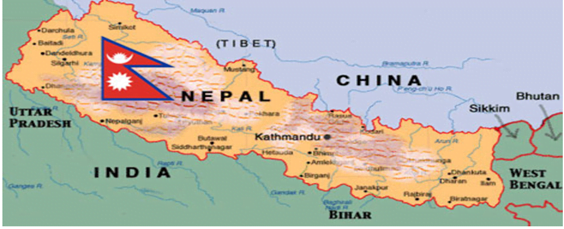International Relations
In News: Recently Nepal informed India that recruitment of Gorkhas under Agnipath scheme does not conform with provisions of the tripartite agreement signed by Nepal, India, and Britain on November 9, 1947.
- Recruitment of Gorkhas from Nepal began in then British Indian army after the Treaty of Sagauli was signed in 1816 between the government of Nepal and the British East India Company.
- And it became a tripartite arrangement in November 1947 after India became independent and Gorkhas in Nepal were given a choice to serve in the Indian Army or go to UK.
India-Nepal Relations
- Founded on the age-old connection of history, culture, tradition and religion, these relations are close, comprehensive, and multidimensional and are pronounced more in political, social, cultural, religious, and economic engagements with each other.

How have the Historical Ties been?
- India and Nepal share similar ties in terms of Hinduism and Buddhism with Buddha’s birthplace Lumbini located in present day Nepal.
- The two countries not only share an open border and unhindered movement of people, but they also have close bonds through marriages and familial ties, popularly known as Roti-Beti ka Rishta.
- The India-Nepal Treaty of Peace and Friendship of 1950 forms the bedrock of the special relations that exist between India and Nepal.
What are the Areas of Cooperation Between the Two Countries?
Trade and Economy:
- India is Nepal’s largest trade partner and the largest source of foreign investments, besides providing transit for almost the entire third country trade of Nepal.
Connectivity:
- Nepal shares border with 5 Indian states– Uttarakhand, Uttar Pradesh, West Bengal, Sikkim, and Bihar. Hence an important point of cultural and economic exchange.
- Nepal being a landlocked country many MOUs have been signed between both governments for better connectivity. For instance, laying an electric rail track linking Kathmandu with Raxaul in India.
Defence Cooperation:
- The Gorkha Regiments of the Indian Army are raised partly by recruitment from hill districts of Nepal.
- India from 2011, every year undertakes a joint military exercise with Nepal known as Surya Kiran.
Cultural:
- There have been initiatives to promote people-to-people contacts in the area of art & culture, academics, and media with different local bodies of Nepal.
- India has signed three sister-city agreements for the twinning of Kathmandu-Varanasi, Lumbini-Bodhgaya, and Janakpur-Ayodhya.
Humanitarian Assistance:
- Nepal lies in the sensitive ecological fragile zone which is prone to earthquakes and floods causing massive damage to both life and money, whereby it remains the biggest recipient of India’s humanitarian assistance.
Multilateral Partnership:
- India and Nepal share multiple multilateral forums such as BBIN (Bangladesh, Bhutan, India, and Nepal), BIMSTEC (Bay of Bengal Initiative for Multi Sectoral Technical and Economic Cooperation), Non-Aligned Movement, and SAARC (South Asian Association for Regional Cooperation) etc.
Why is China’s role in Nepal a matter of concern?
- An Agreement on Transit Transportation, a Protocol was concluded with China providing access to four sea ports and three land ports.
- China has overtaken India as the largest source of foreign direct investment.
- China is also engaged with airport expansion projects at Pokhara and Lumbini.
- Thus Nepal is quietly tilting away from India.
Way Forward:
- Dialogues for Territorial Disputes: The need today is to avoid rhetoric on territorial nationalism and lay the groundwork for quiet dialogue where both sides display sensitivity as they explore what is feasible.
- Strengthening Economic Ties: The power trade agreement needs to be such that India can build trust in Nepal. Despite more renewable energy projects (solar) coming up in India, hydropower is the only source that can manage peak demand in India.
- Investments from India: The Bilateral Investment Promotion and Protection Agreement (BIPPA) signed between India and Nepal needs more attention from Nepal’s side.
- Sensitising Towards Nepal: India should engage more proactively with Nepal in terms of people-to-people engagement, bureaucratic engagement as well as political interactions.
Source: Indian Express














